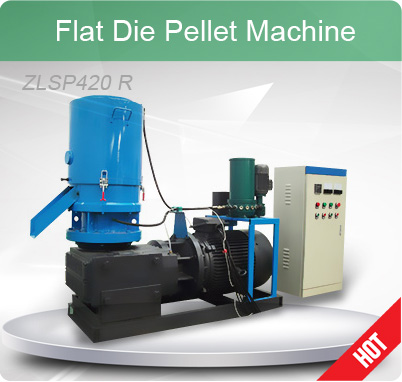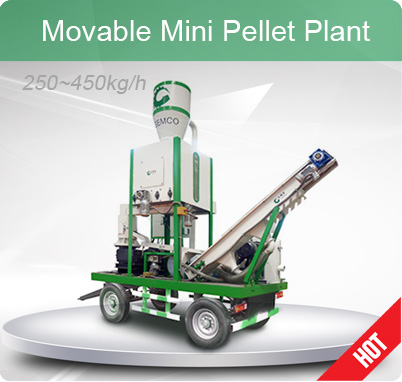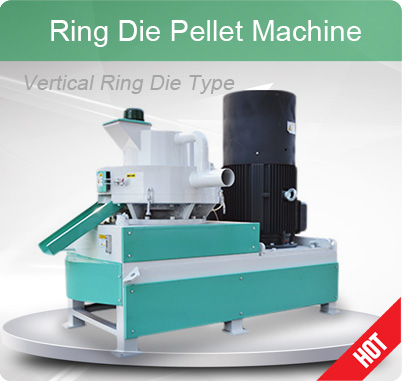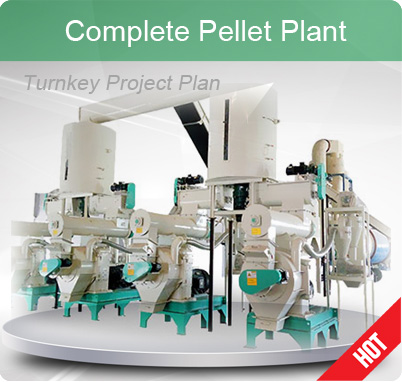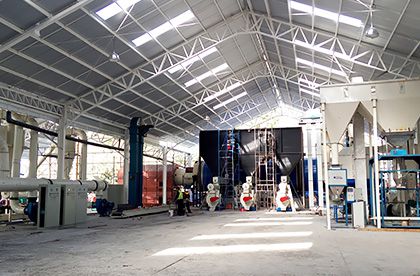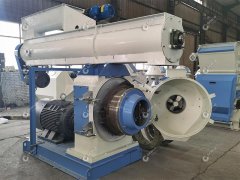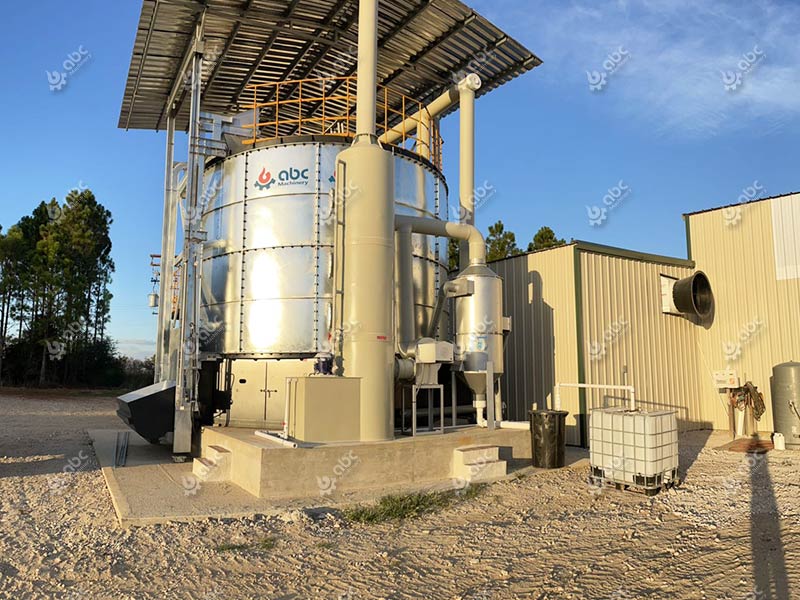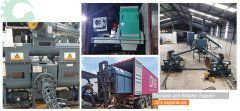Top Tips & Techniques for Fish Feed Pellets Making with Machines
Now, more and more fish farms choose feed pellets for feeding since it offers convenience, precise nutrition, and optimal growth for fish. In addition, fish feed pelelts are compact, easy to handle, and minimize waste. According to different fish species and feeding habits, there are various types of fish feed pellets can be chosen from so as to ensure efficient and healthy fish farming. The hottest sale fish feed pellets are:

How to Make Different Fish Food Pellets?
- Floating Fish Feed Pellets: It is designed to float on the water's surface. They are suitable for fish that primarily feed from the water's surface, such as tilapia and carp. These fish feed pellets remain visible and prevent excessive waste accumulation, allowing farmers to monitor and manage feeding effectively.
- Sinking Fish Feed Pellets: As the name suggests, sinking fish feed pellets quickly descend to the bottom of the water, making it ideal for fish species like catfish and bottom-dwelling fish that tend to feed near or on the substrate. Sinking fish feed pellets ensure that the fish can access their food efficiently, reducing competition for food and wastage.
- Slow-sinking Fish Feed Pellets: It provides a middle ground between floating and sinking pellets. It takes longer to descend, allowing fish that feed at different water levels, such as mid-water swimmers, to consume the pellets comfortably. It is suitable for fish species like rainbow trout and salmon.
Extruded Fish Feed Pellets are produced using a high-temperature, high-pressure process, which enhances fish feed pellet's digestibility and nutrient availability, making it a popular choice for many fish farmers. Extruded pellets offer a balanced nutritional profile, promoting optimal growth and overall health in various fish species.
How to Make Different Fish Feed Pellets?
The benefits of fish feed pellets allow the increasing demand for high quality fish feed pellets, and some want to start a business in fish feed pellets production for more profits, some just want to make their own fish feed pellets to save feeding cost. And, with the development of animal feed production industry, making fish feed is getting much easier. So, how to make high quality fish feed pellets?
Just like other animal feed pellet production, the production of fish feed pellets also requires a series of processes and equipment. Here is the common fish feed pellets production process.

Small Scale Fish Feed Pellet Making Machines at Factory Price
- Raw Material Preparation
The first step is to gather the necessary ingredients for the feed formulation. Common ingredients for fish feed pellet making include fishmeal, soybean meal, wheat flour, fish oil, vitamins, and minerals. These ingredients are mixed in specific proportions to ensure a balanced diet for the fish.
- Grinding and Mixing
Then the raw materials are ground to achieve a uniform particle size, ensuring easy digestion for the fish. Next, the ground materials are thoroughly mixed using a feed mixer to ensure even distribution of nutrients and improves pellet quality.
- Pelletizing
After that, fish feed pellet mill is used for pelletizing process. The mixed feed material is fed into feed pellet mill, where it undergoes compression and extrusion through a die. This process results in the formation of cylindrical pellets. The pellets are then cut to the desired length using a pellet cutter. The key for fish feed pelletizing is to control the extrusion and cutting process parameters such as temperature, humidity, pressure and cutting speed so as to ensure different fish feed pellets produced. It is important to note that different types of fish feed pellets may require different process parameters and die designs. Therefore, when making floating fish feed pellets, it is recommended to choose the right feed pellet machines according to the specific feed recipe and requirements, and to make appropriate adjustments and optimization.
- Drying and Cooling
After the pellets are formed, they need to be dried and cooled to remove excess moisture and improve their stability. This is typically done using a pellet dryer and cooler, which utilize hot air circulation to achieve the desired moisture content and temperature.
The process of making floating fish feed pellets, sinking fish feed pellet and slow-sinking fish feed pellets are almost the same with a few modifications. The grinding size of raw materials for different fish feed pellets are different. If there are any questions about how to make fish feed pellets, just contact us directly to get more detailed fish feed pellet production process or business plan for fish feed pellet making business!
Fish Feed Pellets Extruding Process
Extruding fish feed pellet is a powdered feed (containing starch and protein) by hydrothermal conditioning or without conditioning, sent into fish feed extruder machine, under the action of mechanical force, heating, pressurization, and then extrusion of the mold hole, sudden decompression, the water molecules within the rapid vaporization, so that the material expansion, into a porous pellets feed process.
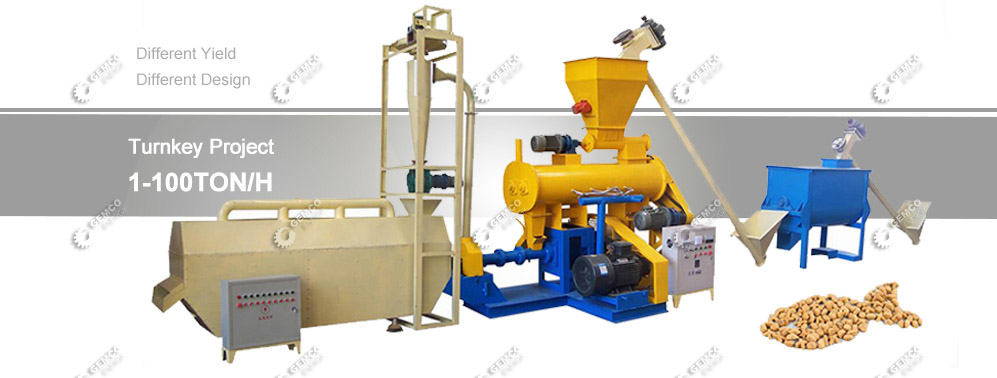
Extruding Fish Feed Pellets Production Line at Low Cost
Fish feed production line, designed with feed extruder machine, can produce floating fish feed pellets, semi-sinking fish feed pellets and sinking fish feed pellets through a series of production processes, including micro crushing of raw materials, ingredients mixing, extruding, cutting drying, spraying, cooling, sieving, packaging, etc. (Related news: 150KGS/H Small Floating Fish Feed Extruder Production Plant Exported to Bolivia >>)
Commercial Fish Feed Pellet Extruder Machine for Sales

How Floating Fish Feed Pellets are Made?
The main problems of extruding fish feed pellets are the high depreciation costs caused by the investment in production equipment, high temperature and pressure on the loss of heat-sensitive nutrients, the need for drying of pellets to increase energy consumption. Packaging and transportation costs are higher than those of hard pellet feed, but it has the unparalleled advantages of other feeds:
- Eliminate anti-nutritional factors and improve the digestibility and absorption rate of feed
- High temperature disinfection to ensure feed safety and hygiene
- Improve the palatability and flavor of products
- Improve starch pasting degree, which is beneficial to the digestion and absorption of starch
- Improve the digestibility and absorption rate of feed
- Facilitate the preservation of cut in water stability



